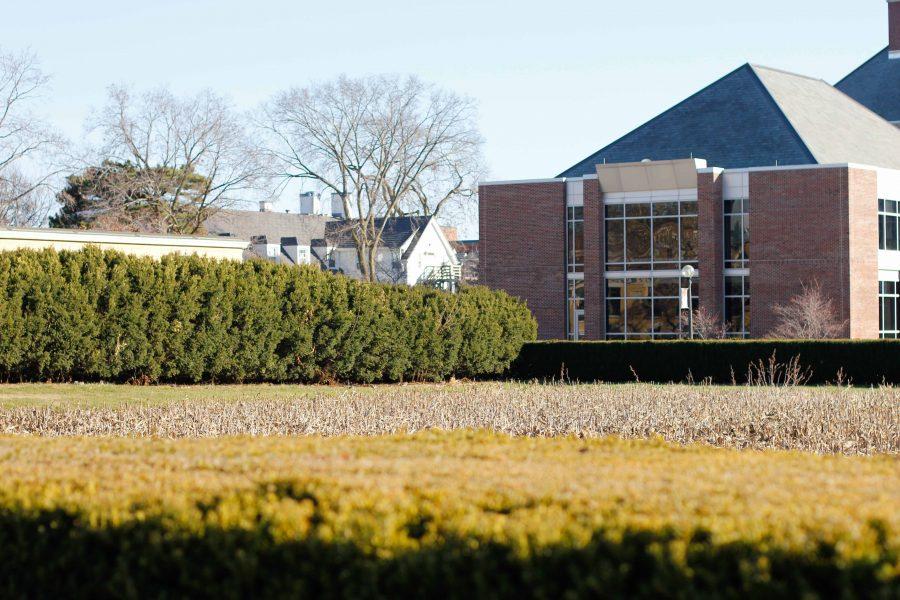Breaking down campus’s most forbidden plot
An exterior view of Morrow Plots on Gregory Drive taken on November 30th, 2016.
Dec 5, 2016
Last updated on March 19, 2017 at 08:06 a.m.
It’s the most forbidden area on campus.
University students pass by it on their way to Mumford Hall, the Animal Sciences Laboratory and the Undergraduate Library. The Morrow Plots is an iconic University landmark because it is North America’s oldest experimental cornfield.
According to University legend, students who walk on the Morrow Plots without permission will face immediate expulsion from the University. Because of this, some students see sneaking onto the plots before their senior year ends as an impressive feat.
The Morrow Plots was established in 1876 and is an important contribution to research on crop rotation. At the University, agriculture students study the Morrow Plots to see how crop rotation affects the soil over long periods of time.
Get The Daily Illini in your inbox!
Emerson Nafziger, professor of agriculture, said the Morrow Plots “goes back to the dawn of crop and soil science in the middle of the 19th century. They were trying to study the importance of adding nutrients to the soil to make the crops do better.”
Nafziger also said the fields were primarily developed in order to demonstrate crop rotation and to prove how growing the same thing on the fields year after year could be detrimental to the soil.
The crops are split into three sections, some of which alternate between corn, wheat, soybeans and other crops. Every six years, such as last year, every section of the Morrow Plots grows only corn.
Thomas Poole, junior in ACES, said the Morrow Plots is important to everyone.
“Morrow Plots is one of the oldest experimental crops for crop sciences in the world. To have that at our university to act as a global monument is pretty cool,” Poole said.
Coming from Chicago, Poole did not grow up surrounded by agriculture. He said that until he arrived at the University, he didn’t have a strong connection to agriculture. Today, Poole said he has a lot of appreciation for how crops grow and how the Morrow Plots contribute to agricultural research.
Poole suggested that the University sponsor an “Agriculture Day” or “Morrow Plots Day” in order to draw attention to the importance of the Morrow Plots for students with a lot of agricultural experience, and to help educate students and community members who don’t have a lot of agricultural experience.
“Morrow Plots symbolizes freedom of research on our campus, allowing for professors and student researchers to come up with their own ideas and test it out, collecting pieces of research that they’ve produced and searched for themselves,” wrote Naomi Canino, freshman in ACES, in an email.
Canino said it’s disheartening when students try to sneak onto the Morrow Plots because it’s not only disrespectful of all of the researchers who put time and work into studying the plots, but it can also be harmful to the students.
“These students probably have no idea what important information they are trampling on, whether that be of crops, different types of soil, seedlings or even chemicals. Not only are they destroying people’s research, they could be in contact with chemicals that could make them really sick,” Canino said.
Poole feels slightly different about walking on the Morrow Plots. Poole has been on the plots, with permission, for the Field and Furrow club and sold pumpkins and mums to students passing by.
However, while Poole said being on the plots for research is a great experience for agriculture students, he agreed with Canino’s thoughts on ruining others’ hard work.
“It’s one thing if you’re walking on the perimeter, but it’s another to start dancing on the fields. Just don’t mess with someone’s research,” Poole said.
For Poole, Morrow Plots has a very large impact on him. He said it is significant that the Morrow Plots exists on campus, and he sees the plots as a mascot or symbol for the Department of Crop Sciences.
“It represents the impact that we’ve had on the University, the state of Illinois, and even the world,” Poole said.






